10 things to keep out of your dining room, according to interior designers
These are the pieces that compromise your dining room decor – and the reasons why you should ditch them
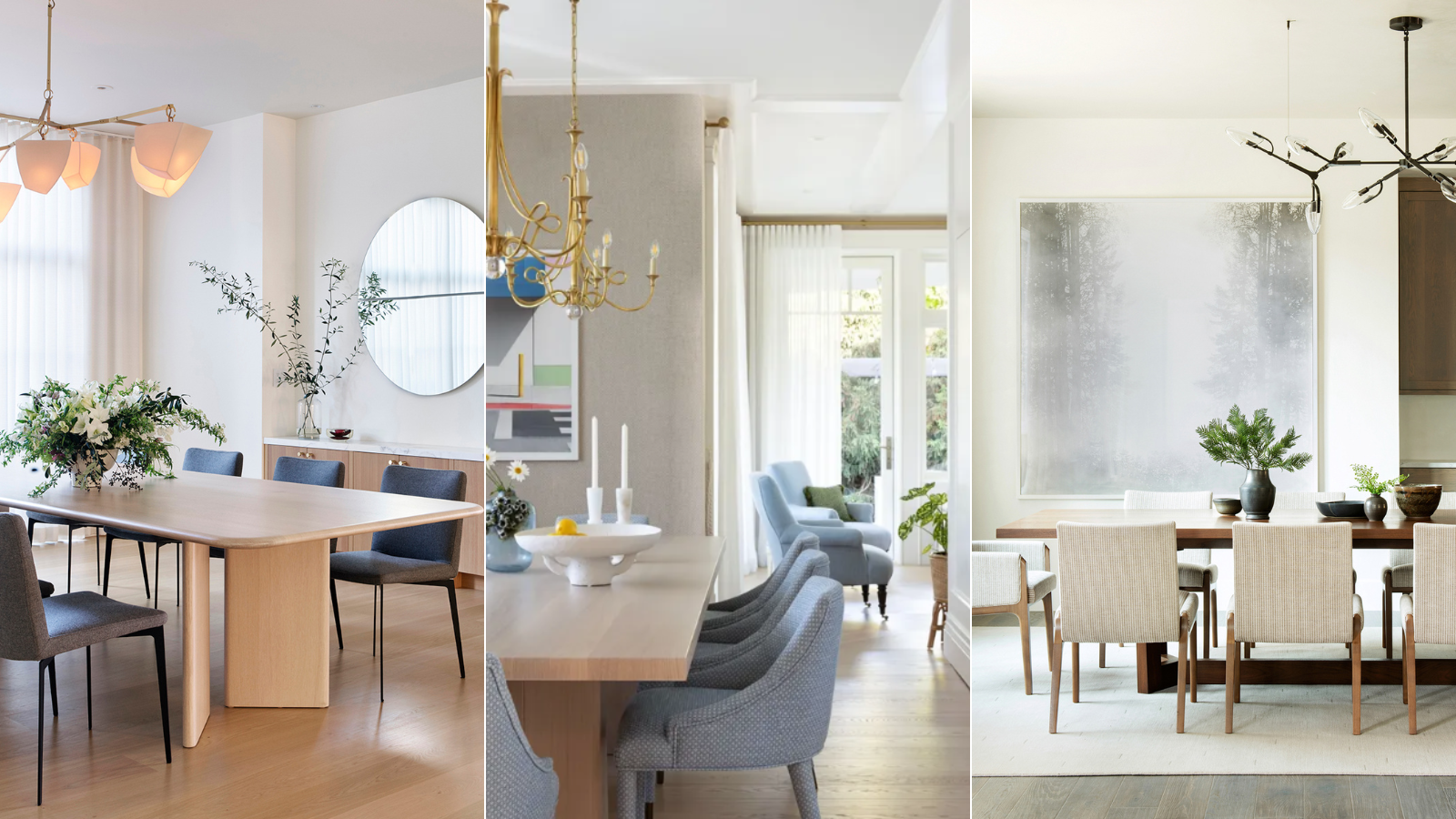

If you want a space with style, there are definitely things to keep out of your dining room. These are the items that interior experts often see featuring in these rooms but in their opinions are definite no-nos.
The reason is that they can compromise your dining room ideas, leaving the space looking flat or dated, or leaving guests feeling uncomfortable. Along with the items that clutter up the room, the things that compromise its appearance or its atmosphere are the ones to locate elsewhere.
What are the offending items? Here interior designers reveal what they’ve seen and advised against in order to make a dining room chic.
10 things to keep out of your dining room
For an elegant dining room layout and a room that feels both welcoming and comfortable to guests as well as family, there are some things that really shouldn’t have a place. These are the trespassers designers warn to avoid and the reasons why they don’t fit in.
1. Furniture sets
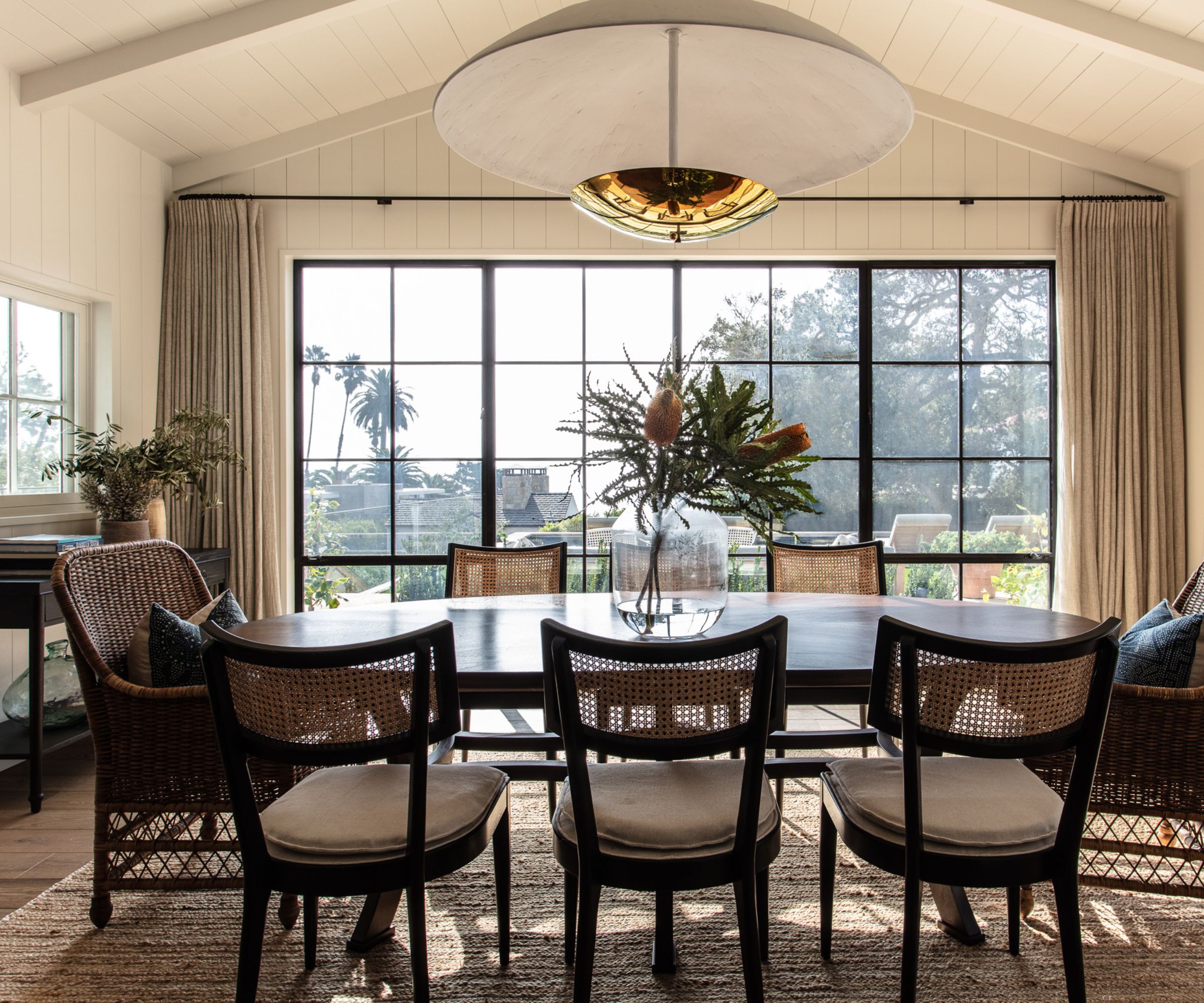
Furniture sets do make buying easy, but you’ll create a better atmosphere for the room if you don’t match dining room furniture in this way.
‘Matching sets of everything can create some boring (dining) rooms,’ says interior designer Leigh Spicher, national director of design studios for Ashton Woods. ‘Chances are you want your dining space to foster stories and interesting conversation, so make sure your design/decor sets the stage.
Instead? ‘Apply the design principle of harmony (blending of different elements),’ she says. ‘For example, if you choose a wood table, opt for metal or wood upholstered chairs. Leather would be great, too.’
Joyce Huston, lead interior designer and co-founder at Decorilla Online Interior Design, agrees. ‘I find that matching furniture really seeps the life and dimension out of a dining space,’ she says. ‘I love an eclectic mix of pieces that fits the style I’m looking to achieve. I find this really makes the unique character shine and makes a dining room so much more interesting.’
2. Large family photos
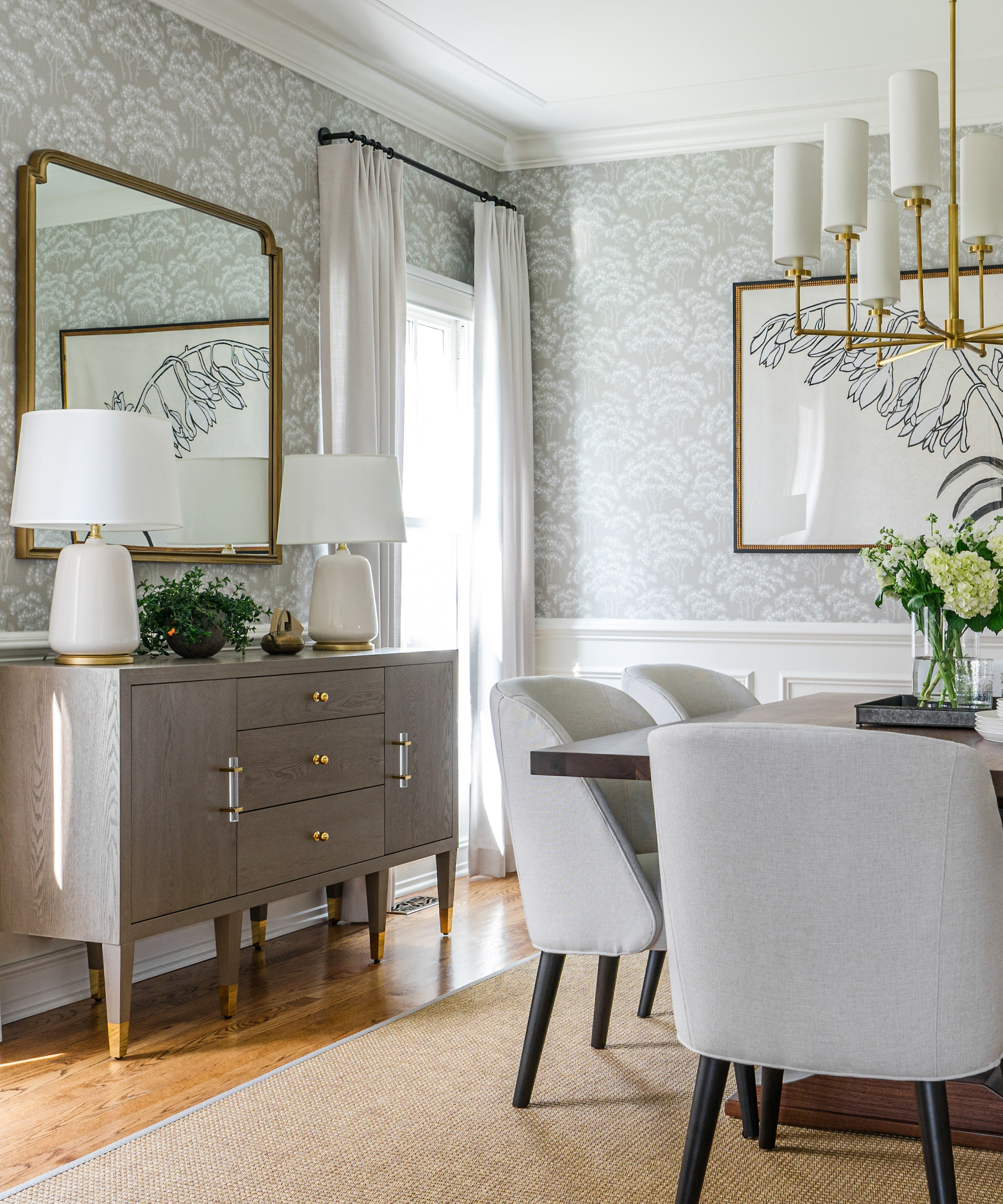
Large family photos have a place, but not in the dining room, suggests Jessica Moran of Chicago-based boutique firm Jessica Moran Interiors.
‘Dining rooms are a great place to showcase your artwork and collectibles, but I'd suggest leaving the large family photos for a different room since they can be intimate and personal and potentially make your guests feel uncomfortable,’ she explains. ‘Instead, opt for decorating with art and mirrors that make sense with your overall design.’
3. Fake greenery
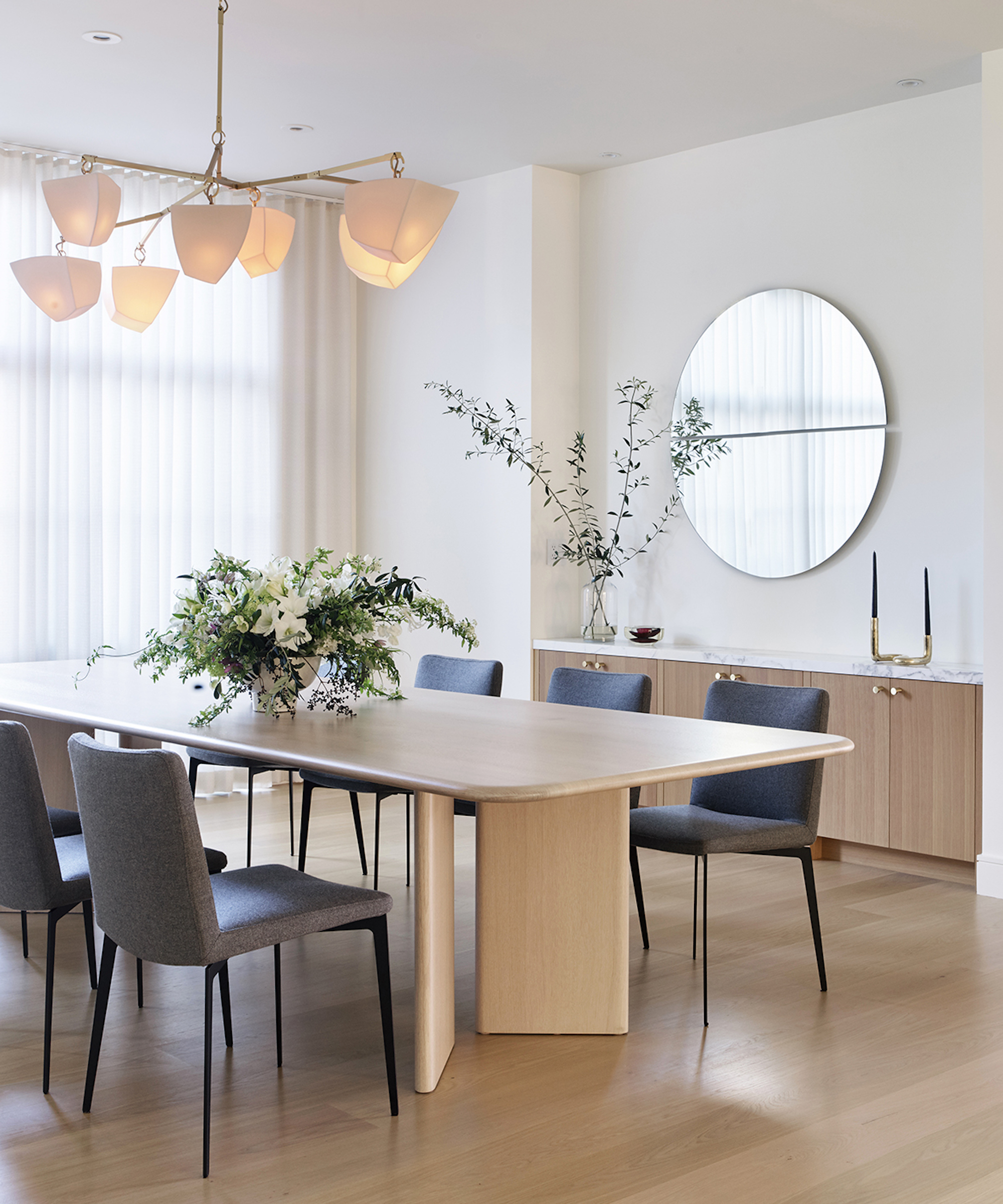
Say yes to the best indoor plants, but keep faux foliage and flowers out of the dining room, says Jennifer Jones, principal designer at San Francisco-based Niche Interiors.
‘Fake trees or plants are such a buzzkill,’ she explains. ‘Not only do they look cheap, the leaves tend to attract dust and are hard to keep clean. Real plants on the other hand are a welcome addition and can add life and color to your dining room.’
4. Randomly mismatched dining chairs

No, dining chairs don’t have to all be the same – but they do have to work together. ‘Mismatched chairs can be a cool design moment, but they need to feel cohesive,’ explains Los Angeles-based interior designer Victoria Holly of Victoria Holly Interiors.
‘Randomly adding different chairs together without considering proportions, materials, or style can make the dining room feel disjointed. Keep mismatching intentional and balanced.’ (And note that this is important if you’re asking similarly do living room chairs need to match?)
5. Office desks or accessories

If you want to preserve the ambiance of a dining room, make it a dual-purpose space with caution.
‘Dining rooms often double as temporary home offices but bringing in full workstations or office-related items creates a cluttered and stressed environment, detracting from the room's primary function,’ says Alan Berman, president of Archetype Architecture.
‘If work must be done in the dining room, consider compact, unobtrusive storage solutions, and keep work items out of sight when dining.’
6. Screens
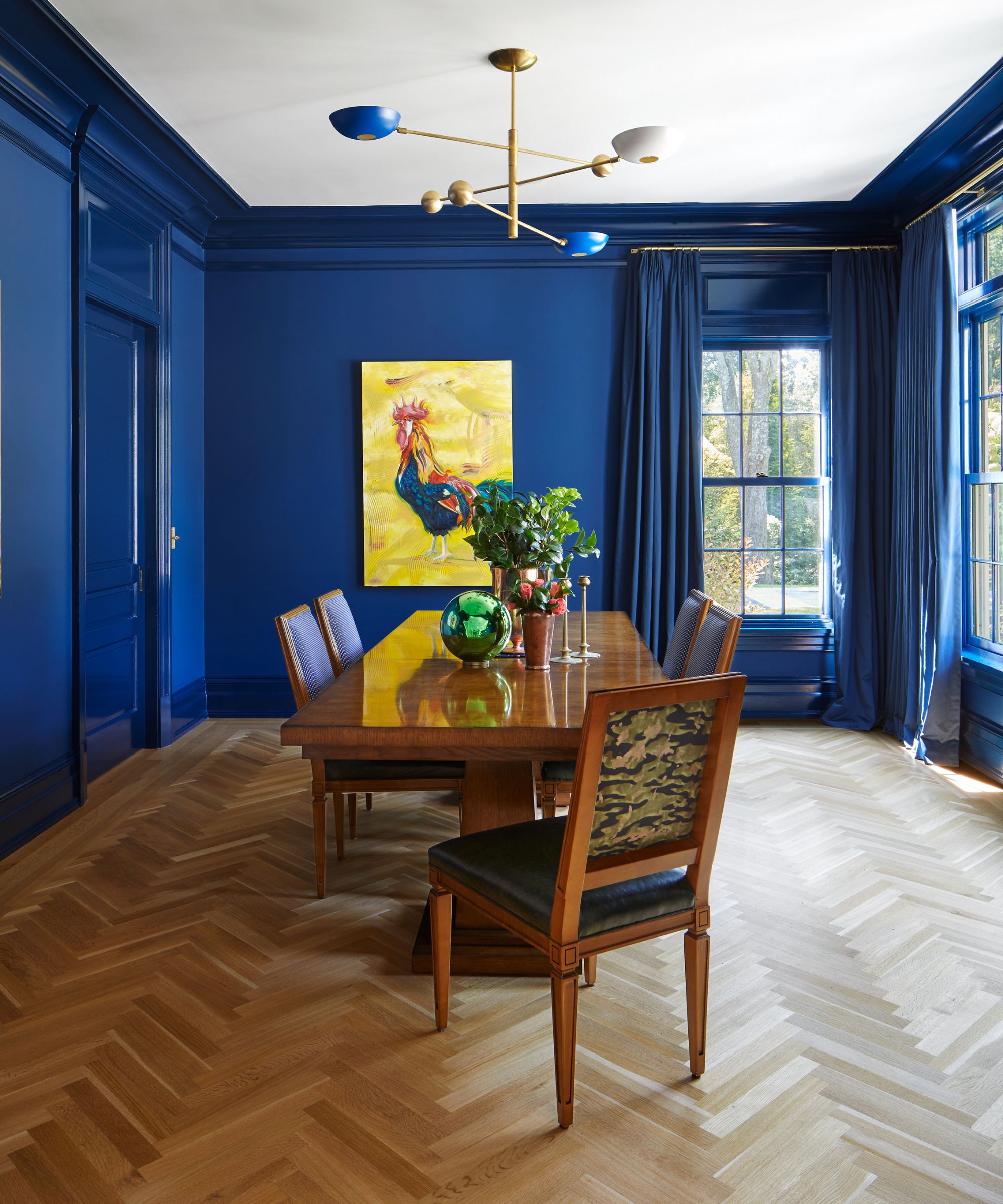
If you want quality time in the dining room, keep TVs out, recommends Joyce Huston.
‘The last thing I ever want to see in a dining room is a television,’ she says. ‘We’re already constantly bombarded with screens, and having these infringe on meal times is borderline sacrilege.'
‘Interior design is about the mental and emotional experience as much as the visual one, and dining rooms are renowned as a place for people to gather and spend uninterrupted quality time with their loved ones. Screens like televisions totally destroy that, which is why I think they should be forbidden in a dining room.’
7. Stuffed china cabinet
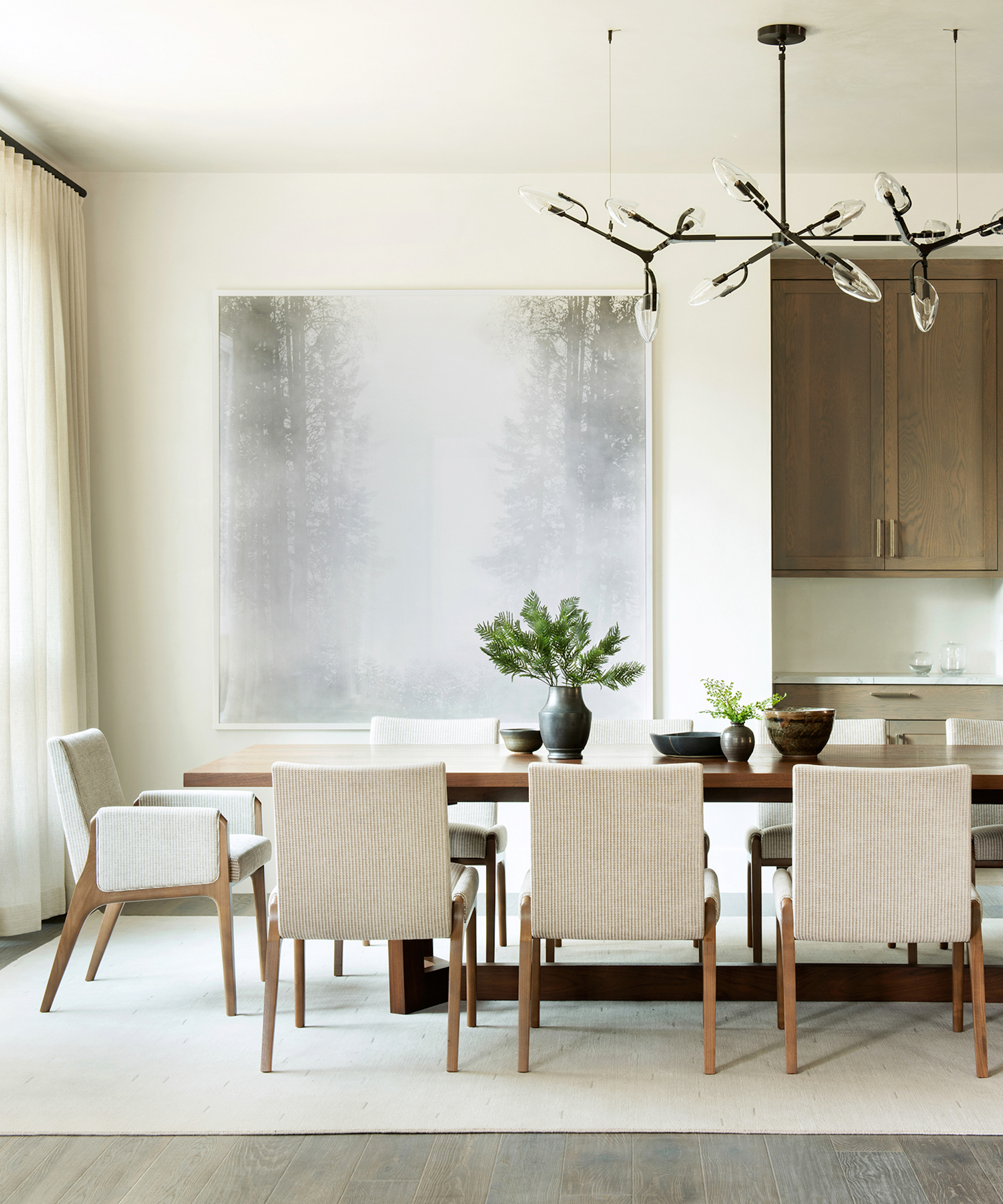
The dining room might seem like a space to show off trinkets, but designers say to think again.
‘I’ve seen Grandma’s china cabinet stuffed with tchotchkes one too many times,’ says Jennifer Jones. ‘Typically, they just gather dust and take up valuable space in the dining room, oftentimes making the room feel cramped and cluttered.’
Bear in mind that this doesn’t mean you can’t showcase stuff in your home; you just need to follow the guidelines on how to display collections without clutter.
8. Oversized or dark area rugs
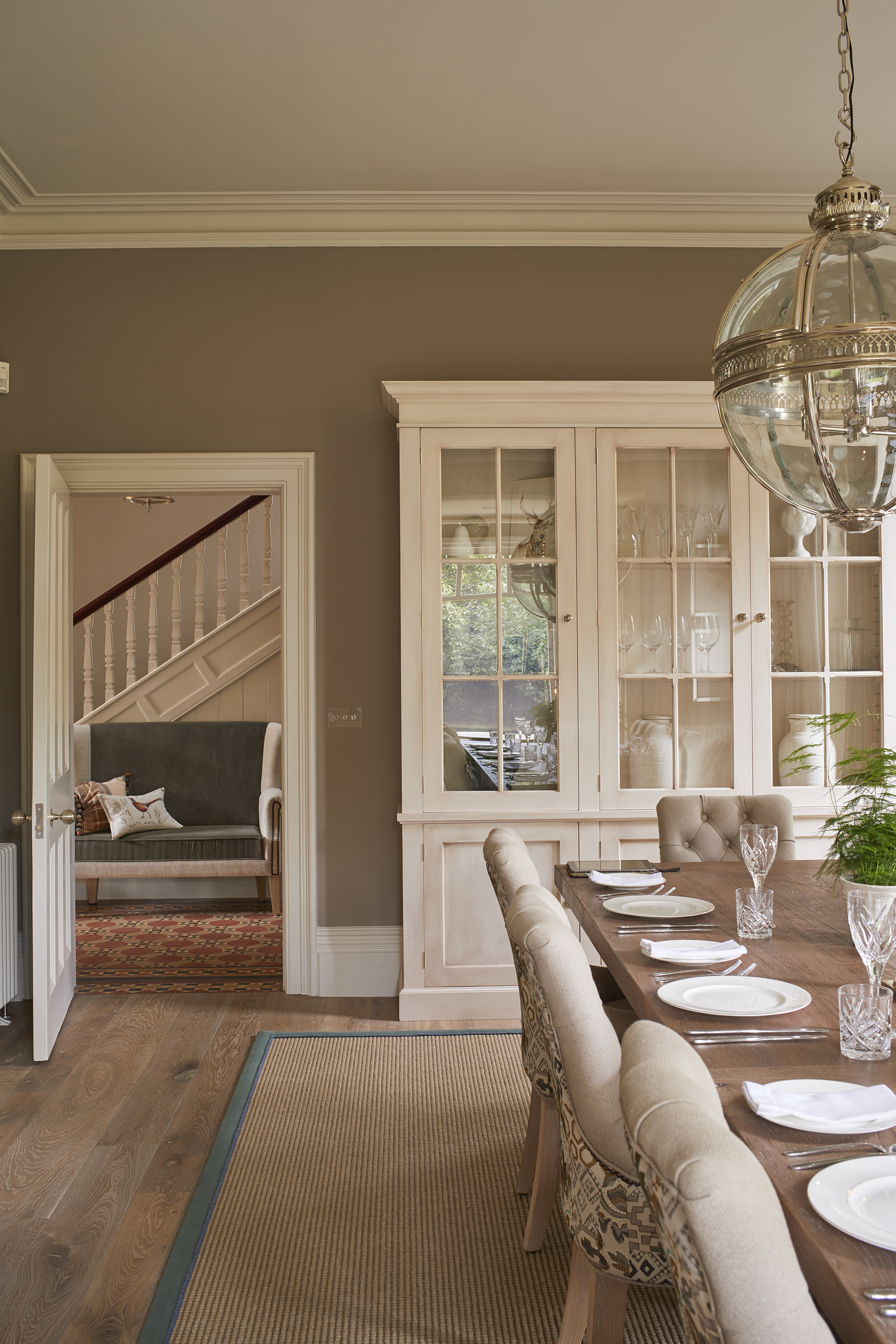
Be mindful of the rules of choosing a dining room rug as there are some that should be kept out of the space.
‘While an area rug can anchor a dining room, one that’s too big can feel like it’s swallowing the space or make the room feel off-balance,’ explains Victoria Holly.
‘That’s rugs that extend so far beyond the dining set that they make the layout feel awkward (and allow for spilling when you’re bringing in food!) Stick with a size that allows the chairs to remain on the rug even when pulled out, but doesn’t overwhelm the space.’
Think about the rug’s color and texture, too, advises Alan Berman. ‘Dark, heavy rugs can make a dining room feel smaller and absorb too much light,’ he says. ‘Rugs that are too thick also make it difficult to pull chairs in and out. A low-pile, lighter-toned rug with easy maintenance in mind (like polypropylene or jute) is more practical.’
9. Large pieces of furniture
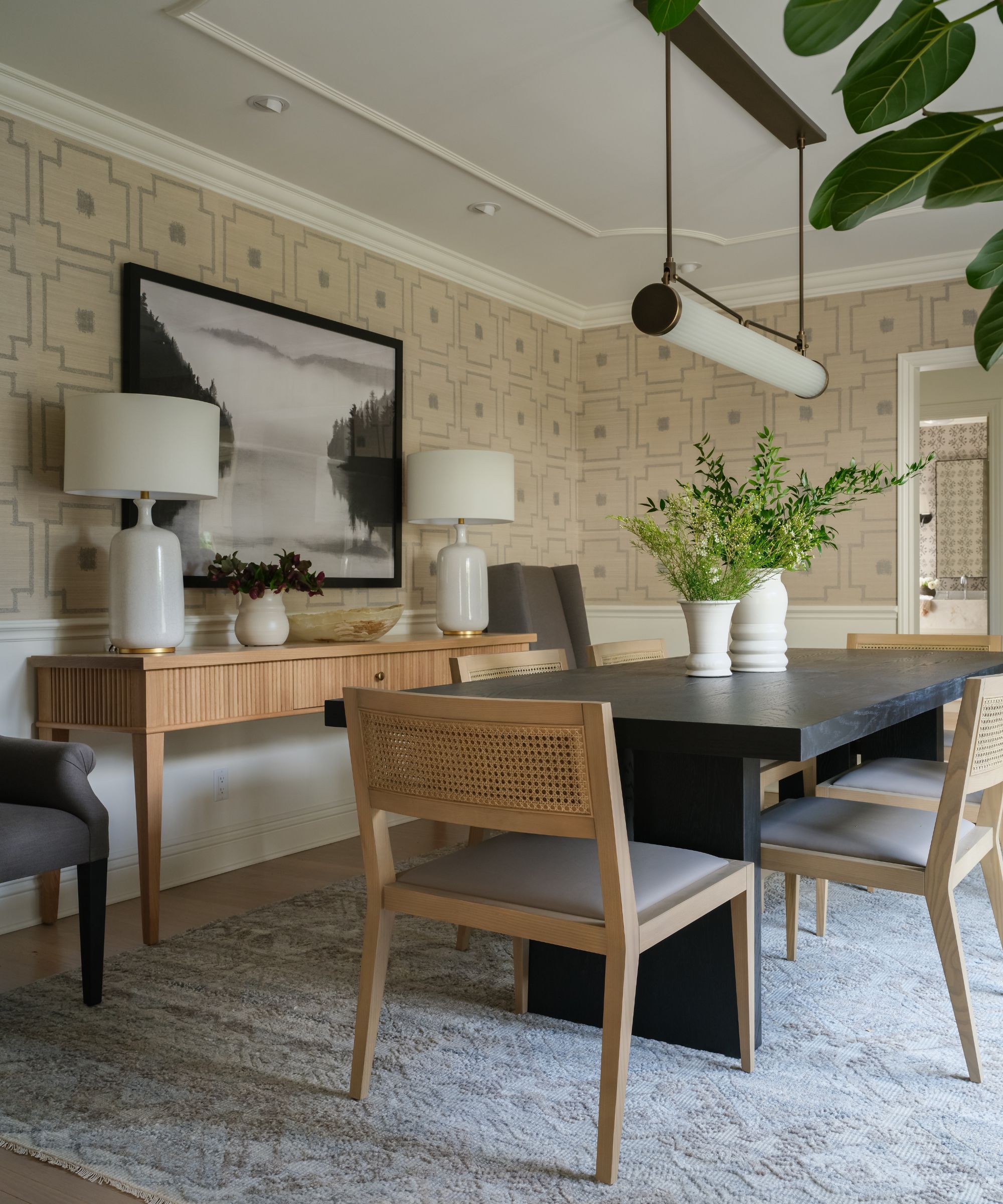
There are some furniture pieces that are often added to the dining room that should be on the keep-out list.
‘While comfort is essential, large sofas or lounge chairs belong more in living rooms than dining rooms,’ says Alan Berman. ‘They can take up too much space, interrupting flow and making the room feel cluttered. Dining rooms benefit from a layout that allows people to move around freely and easily access dining chairs and tables.’
Also best kept elsewhere are bulky storage cabinets or dressers, he says. ‘Large storage pieces, especially those with deep drawers or cabinets, can overwhelm a dining room and make it feel cramped,’ Alan says. ‘Instead, opt for a slim credenza or sideboard that offers storage without taking up excess space. This allows more room for chairs to be pulled out comfortably.’
10. Non-essentials
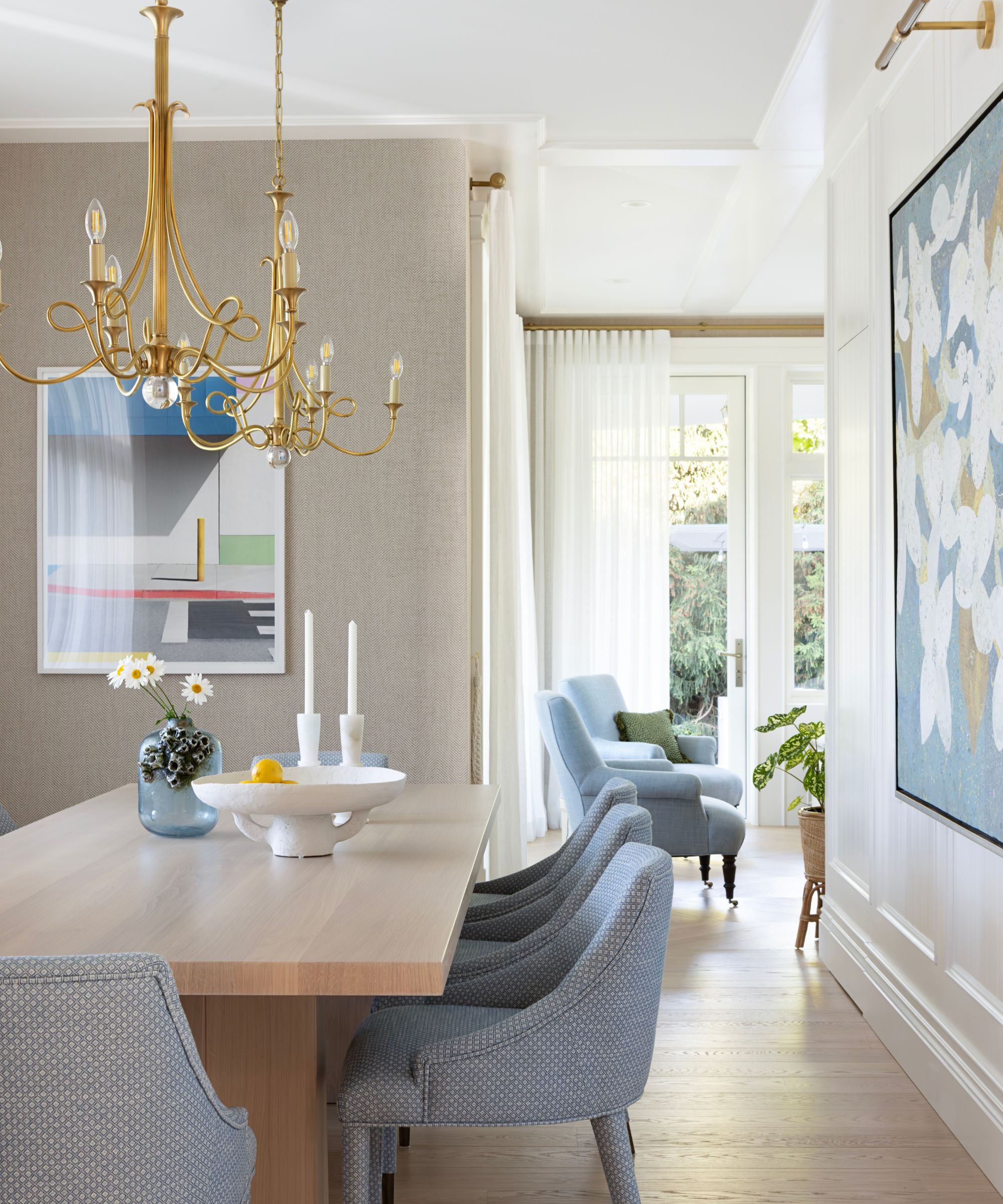
It’s a temptation many people fall into, but putting non-essentials in the dining room equals clutter.
‘In today’s homes, the dining room often doubles as a multipurpose space,’ says Victoria Holly. ‘But using it as a space for homework, mail, or random storage can detract from its purpose. If you need functionality, consider a nearby console or cabinet to keep the clutter hidden but accessible.’
‘Aim to keep the dining room clear of non-essentials, reserving it solely for dining-related items like dishware, table settings, and a few decorative accents,’ advises Alan Berman.
There’s a good reason to keep certain items out of the dining room. ‘These items often make dining rooms feel busier or less purposeful than intended,’ says Alan Berman. ‘Sticking to decor and furnishings that enhance comfort, and socializing keeps the dining room feeling open and inviting.’
Sign up to the Homes & Gardens newsletter
Design expertise in your inbox – from inspiring decorating ideas and beautiful celebrity homes to practical gardening advice and shopping round-ups.

Sarah is a freelance journalist and editor. Previously executive editor of Ideal Home, she’s specialized in interiors, property and gardens for over 20 years, and covers interior design, house design, gardens, and cleaning and organizing a home for Homes & Gardens. She’s written for websites, including Houzz, Channel 4’s flagship website, 4Homes, and Future’s T3; national newspapers, including The Guardian; and magazines including Future’s Country Homes & Interiors, Homebuilding & Renovating, Period Living, and Style at Home, as well as House Beautiful, Good Homes, Grand Designs, Homes & Antiques, LandLove and The English Home among others. It’s no big surprise that she likes to put what she writes about into practice, and is a serial house renovator.
-
 How to fertilize magnolias – garden experts reveal the secrets to better blooming, and timing is critical
How to fertilize magnolias – garden experts reveal the secrets to better blooming, and timing is criticalMagnolias are famed for their spring flowers, and feeding at the right time can give trees a boost
By Thomas Rutter Published
-
 Sarah Jessica Parker's spring tablescape epitomizes lived-in luxury with art deco candle holders and a statement tablecloth – it's easy (and affordable) to recreate
Sarah Jessica Parker's spring tablescape epitomizes lived-in luxury with art deco candle holders and a statement tablecloth – it's easy (and affordable) to recreateKick off the season right with a warm table that invites guests into your home by emulating Sarah Jessica Parker's luxe and cozy scheme
By Sophie Edwards Published